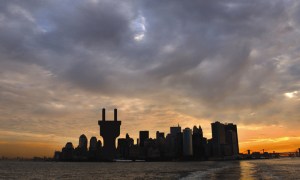
The city just finished one of its most wintry Februaries, highlighting once again the inescapable conundrum for landlords: how to keep the power and heat on sufficiently at the best possible cost. It is a seemingly ceaseless challenge-New York already pays the second-highest electricity prices in the nation, behind only Hawaii-one met by energy firms and their clients every day with varying degrees of success.
And, with the Bloomberg administration intent on lowering the city’s carbon footprint, it’s a challenge now compounded by the voguish need for energy efficiency. Let’s be green, people! Or greener.
Buildings account for a disproportionately high percentage of the city’s emissions because of the widespread use of public transportation. Much of the day-to-day costs of operating a building come from energy, and it’s in an owner’s best interest to keep them down. But how?
New York’s energy system changed significantly in 1996, when the New York State Public Service Commission, a bipartisan state agency, deregulated the state’s electricity and gas industries. Consumers were no longer forced to choose energy from local utility companies, and could choose to receive energy from energy service companies, or ESCOs. The goal was to lower costs and encourage innovation and new technology, according to the agency’s Web site, and massive companies like Con Edison, Central Hudson and Niagara Mohawk would offer alternative sources of power to consumers in subsequent years.
That was also the year that the federal government further developed the Energy Star label, which would become a benchmark of energy efficiency and a precursor to the widespread Leadership in Energy and Environmental Design (LEED) certification developed by the U.S. Green Building Council in 1998. The New York State Energy Research and Development Authority began funding electricity research and development in the same year, as the state moved toward a deregulated market.
FRUSTRATINGLY SO SIMPLE to begin with, isn’t it? Energy costs are divided among supply and delivery in New York City, as elsewhere. Supply is based on the actual generation of power, whether it is by steam, natural gas or more-for now-exotic forms, like wind or solar. It is tied to the global marketplace. Delivery, on the other hand, comes from the cost of transporting the power through pipes and power lines to the user. Deregulation gave consumers the freedom to choose the source, or supply, component of energy costs, while still locking them into their immediate infrastructure, or delivery costs.
Significant savings can come from managing some of the less glamorous parts of a building, such as the boiler. Decidedly mundane but financially astute technology like EnTech Digital Controls’ flagship control system, the Virtual Remote-500, and U.S. Energy Group’s USE Manager measure the efficiency of a building’s boiler system, aiming for uniform interior temperatures.
U.S. Energy Group’s USE Manager is aimed at Class B and C commercial buildings as well as apartment buildings. Traditional boiler controls only look at outside temperatures when determining heating; the USE Manager looks at outdoor and indoor measurements, resulting in about a 30 percent reduction in oil, gas and city steam consumption, according to Tom Scali, vice president of sales at U.S. Energy Group. The system, which is Internet-based, also emails users regarding inefficiencies and cuts down on water loss in the heating process, he said. The cost of the system is around $20,000.


